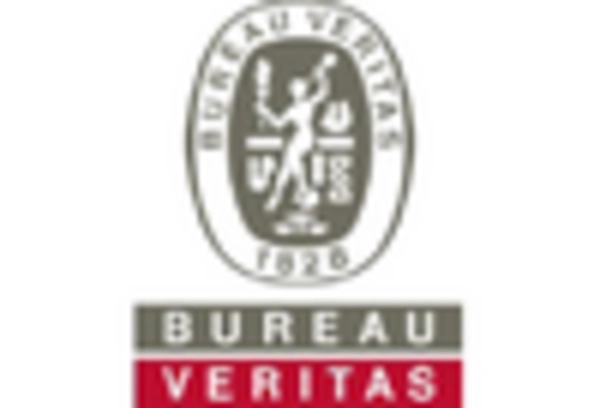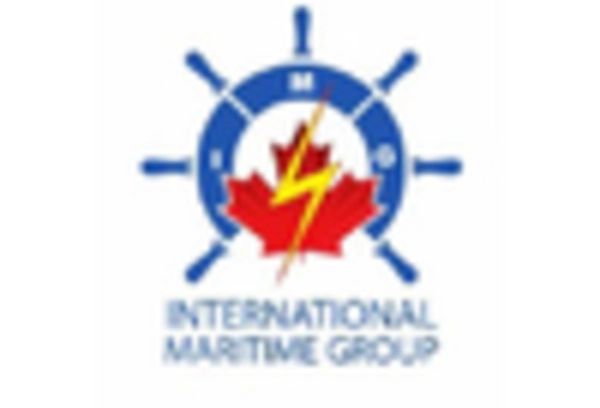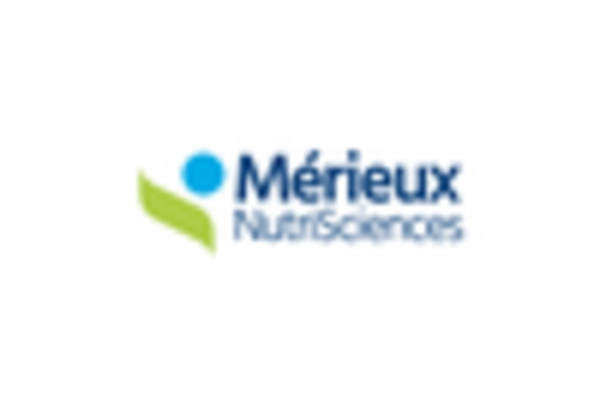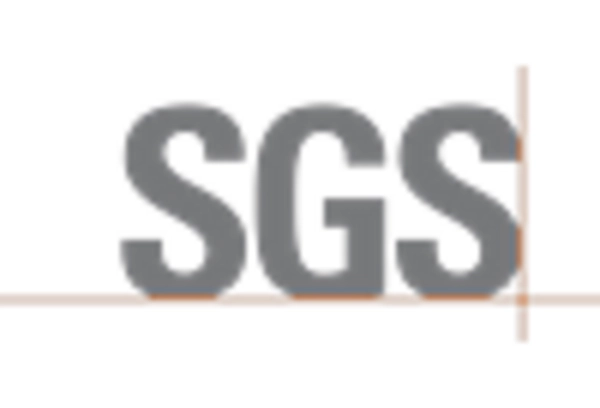Growing Consumer Awareness
The increasing awareness among consumers regarding food safety is a pivotal driver for the global food-safety-testing market. As consumers become more informed about foodborne illnesses and their potential consequences, they demand higher safety standards from food producers. This trend is reflected in the rising sales of organic and locally sourced products, which often undergo more rigorous testing. In the US, the market for organic food has seen a growth rate of approximately 10% annually, indicating a shift towards safer food options. Consequently, food manufacturers are compelled to invest in advanced testing methods to meet consumer expectations, thereby propelling the global food-safety-testing market.
Expansion of Food Supply Chains
The globalization of food supply chains presents both opportunities and challenges for the global food-safety-testing market. As food products are sourced from various regions, the complexity of ensuring safety increases. This expansion necessitates rigorous testing to prevent contamination and ensure compliance with safety standards. In the US, the importation of food products has surged, with approximately 15% of the food supply being imported. This trend underscores the need for enhanced testing measures to safeguard public health. Consequently, food companies are investing in testing technologies to monitor their supply chains effectively, driving growth in the global food-safety-testing market.
Regulatory Compliance Requirements
Stringent regulatory frameworks imposed by government agencies are a significant driver of the global food-safety-testing market. In the US, agencies such as the FDA and USDA enforce strict guidelines to ensure food safety, compelling food producers to adhere to rigorous testing protocols. The Food Safety Modernization Act (FSMA) has further intensified these requirements, mandating preventive controls and regular testing for foodborne pathogens. As a result, food companies are increasingly investing in testing solutions to comply with these regulations, which is expected to contribute to a market growth rate of around 7% annually. This regulatory landscape underscores the importance of robust testing practices in the global food-safety-testing market.
Technological Advancements in Testing
Technological innovations play a crucial role in shaping the global food-safety-testing market. The introduction of advanced testing technologies, such as PCR (Polymerase Chain Reaction) and next-generation sequencing, enhances the accuracy and speed of food safety tests. These technologies allow for the rapid detection of pathogens and contaminants, which is essential for maintaining food quality. In the US, the adoption of these technologies has led to a significant reduction in testing times, with some methods providing results in under an hour. This efficiency not only benefits food manufacturers but also strengthens consumer trust, thereby driving growth in the global food-safety-testing market.
Rising Incidence of Foodborne Illnesses
The alarming rise in foodborne illnesses is a critical driver for the global food-safety-testing market. According to the CDC, millions of cases of foodborne diseases occur annually in the US, leading to significant health concerns and economic losses. This situation has heightened the focus on food safety, prompting both consumers and manufacturers to prioritize testing. The financial implications of food recalls and associated liabilities further incentivize food producers to implement comprehensive testing protocols. Consequently, the increasing incidence of foodborne illnesses is likely to propel demand for testing services, thereby fostering growth in the global food-safety-testing market.

















Leave a Comment